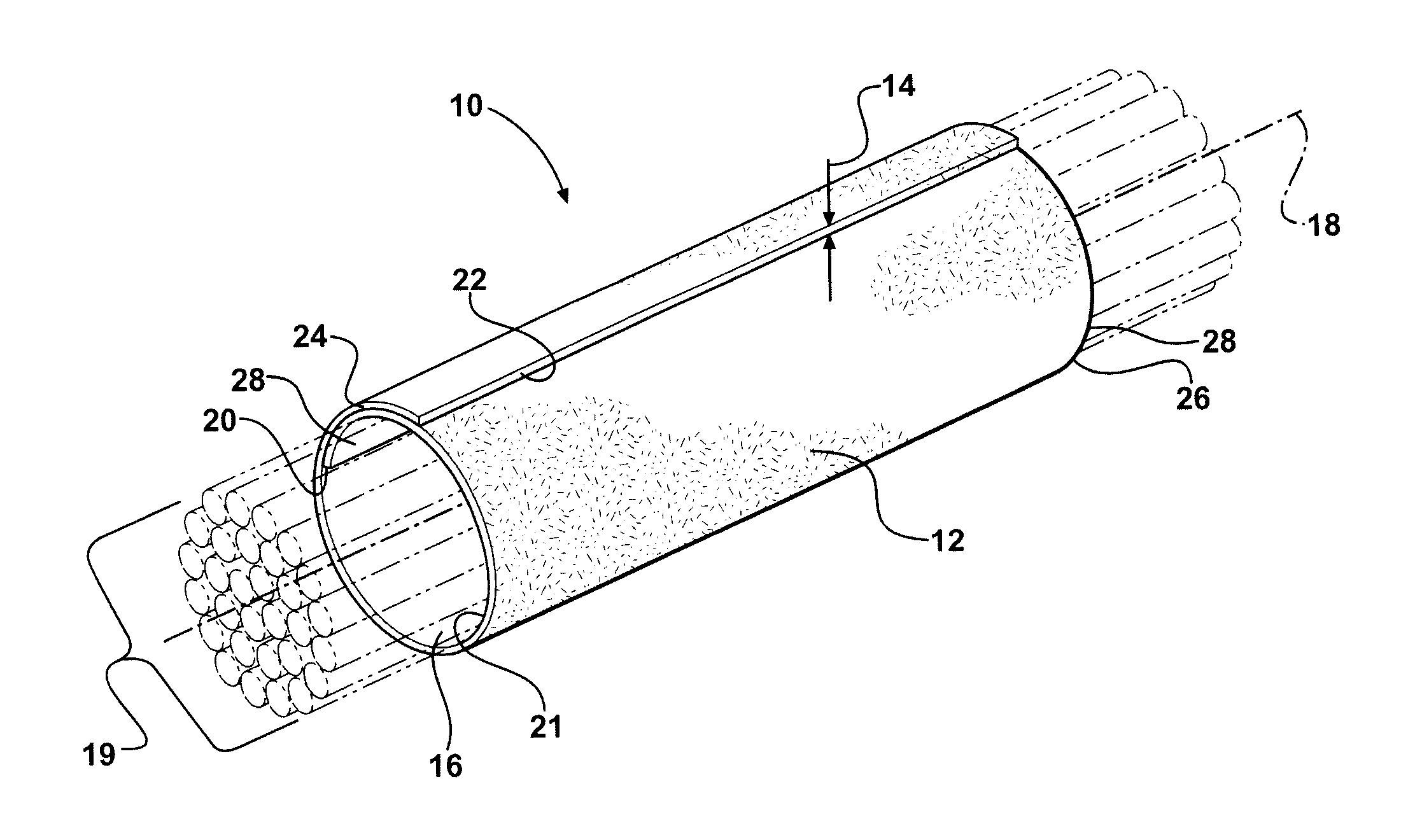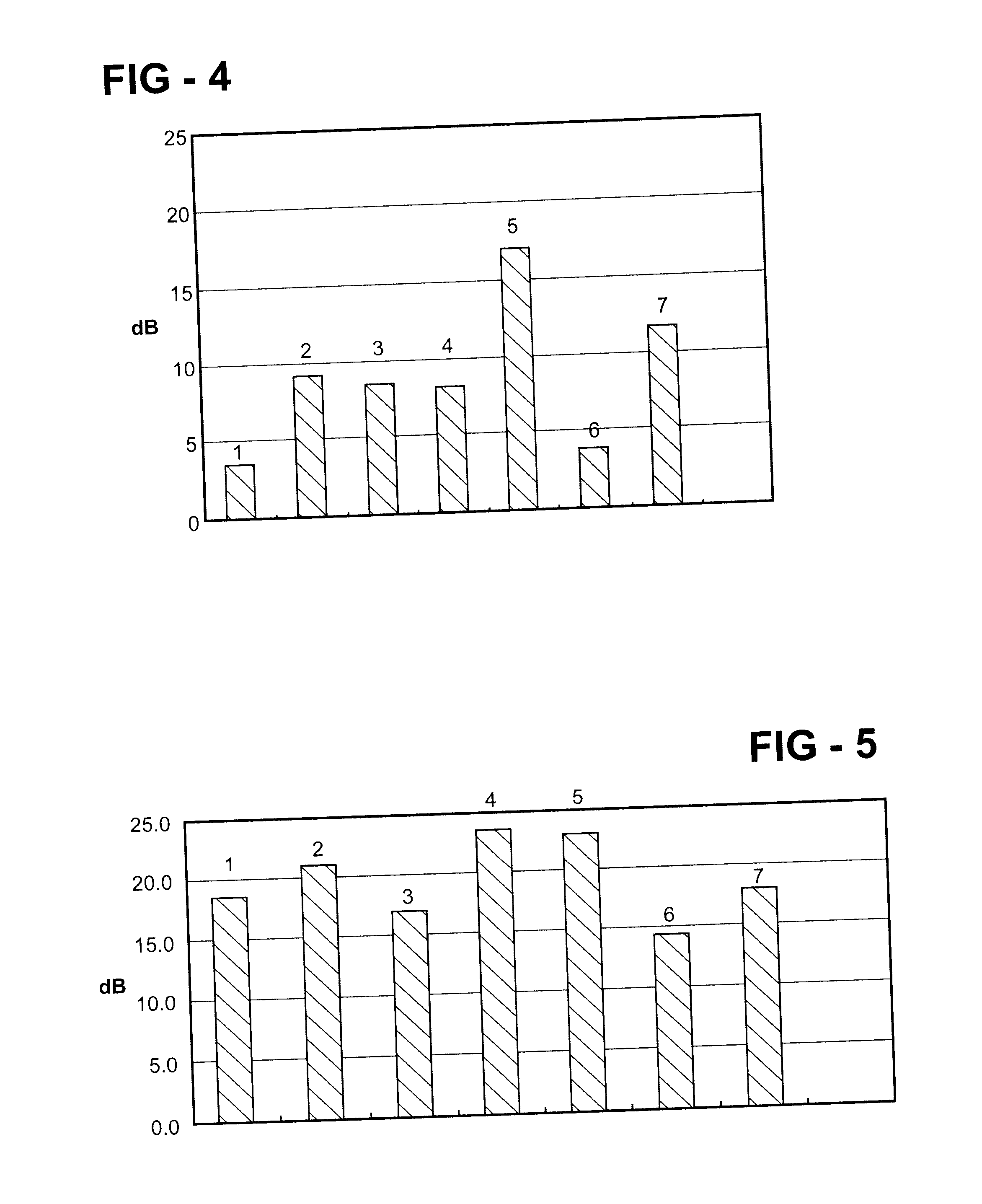Non-woven self-wrapping acoustic sleeve and method of construction thereof
a technology of acoustic protection sleeves and elongates, which is applied in the direction of weaving, bundling articles, knitting, etc., can solve the problems of laborious tape application, undesirable noise produced by wire harnesses in sleeves, and high cost of application, so as to prevent the transmission of undesirable sound waves, without affecting the protective strength or the effectiveness of acoustic barrier
- Summary
- Abstract
- Description
- Claims
- Application Information
AI Technical Summary
Benefits of technology
Problems solved by technology
Method used
Image
Examples
Embodiment Construction
[0018] Referring in more detail to the drawings, FIG. 1 shows a non-woven sleeve 10 constructed according to one presently preferred embodiment of the invention. The sleeve 10 has a wall 12 constructed from a non-woven material and formed into a self-wrapping tubular configuration to define an enclosed inner cavity 16 when in its self-wrapped configuration. The cavity 16 is tubular and readily accessible along a longitudinal axis 18 so that elongate members, such as wires 19 or a wire harness, for example, can be readily disposed radially toward the axis 18 into the cavity 16, and conversely, removed from the cavity 16, such as during service. The non-woven material forming the wall 12 is an abrasion resistant, flexible, resilient, acoustic dampening polyester material, and in one presently preferred embodiment, is formed from PET, by way of example and without limitation. Accordingly, the sleeve 10 is well suited to protect the elongate members 19 within the cavity 16 against abras...
PUM
| Property | Measurement | Unit |
|---|---|---|
| Fraction | aaaaa | aaaaa |
| Fraction | aaaaa | aaaaa |
| Thickness | aaaaa | aaaaa |
Abstract
Description
Claims
Application Information
 Login to View More
Login to View More - R&D
- Intellectual Property
- Life Sciences
- Materials
- Tech Scout
- Unparalleled Data Quality
- Higher Quality Content
- 60% Fewer Hallucinations
Browse by: Latest US Patents, China's latest patents, Technical Efficacy Thesaurus, Application Domain, Technology Topic, Popular Technical Reports.
© 2025 PatSnap. All rights reserved.Legal|Privacy policy|Modern Slavery Act Transparency Statement|Sitemap|About US| Contact US: help@patsnap.com



